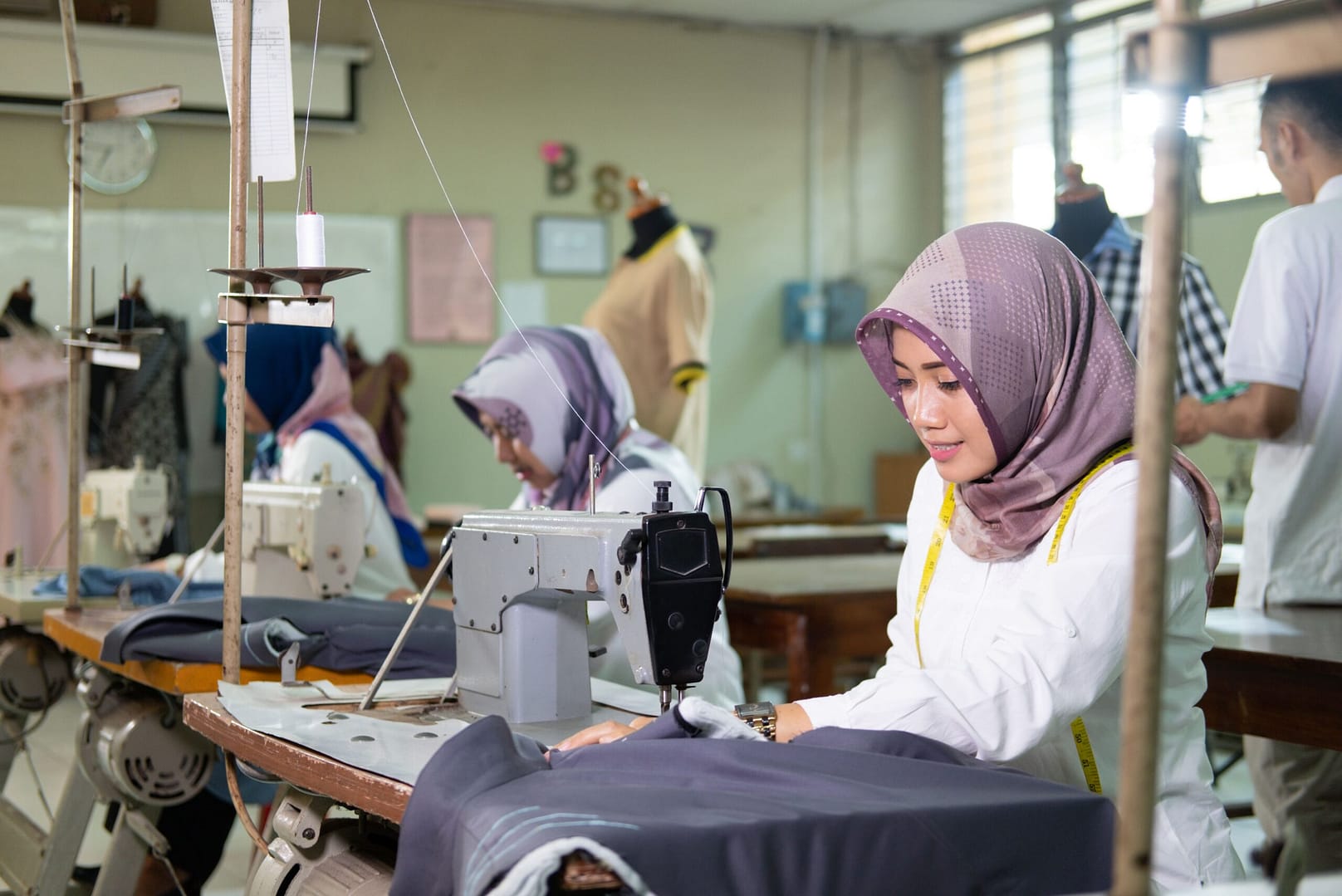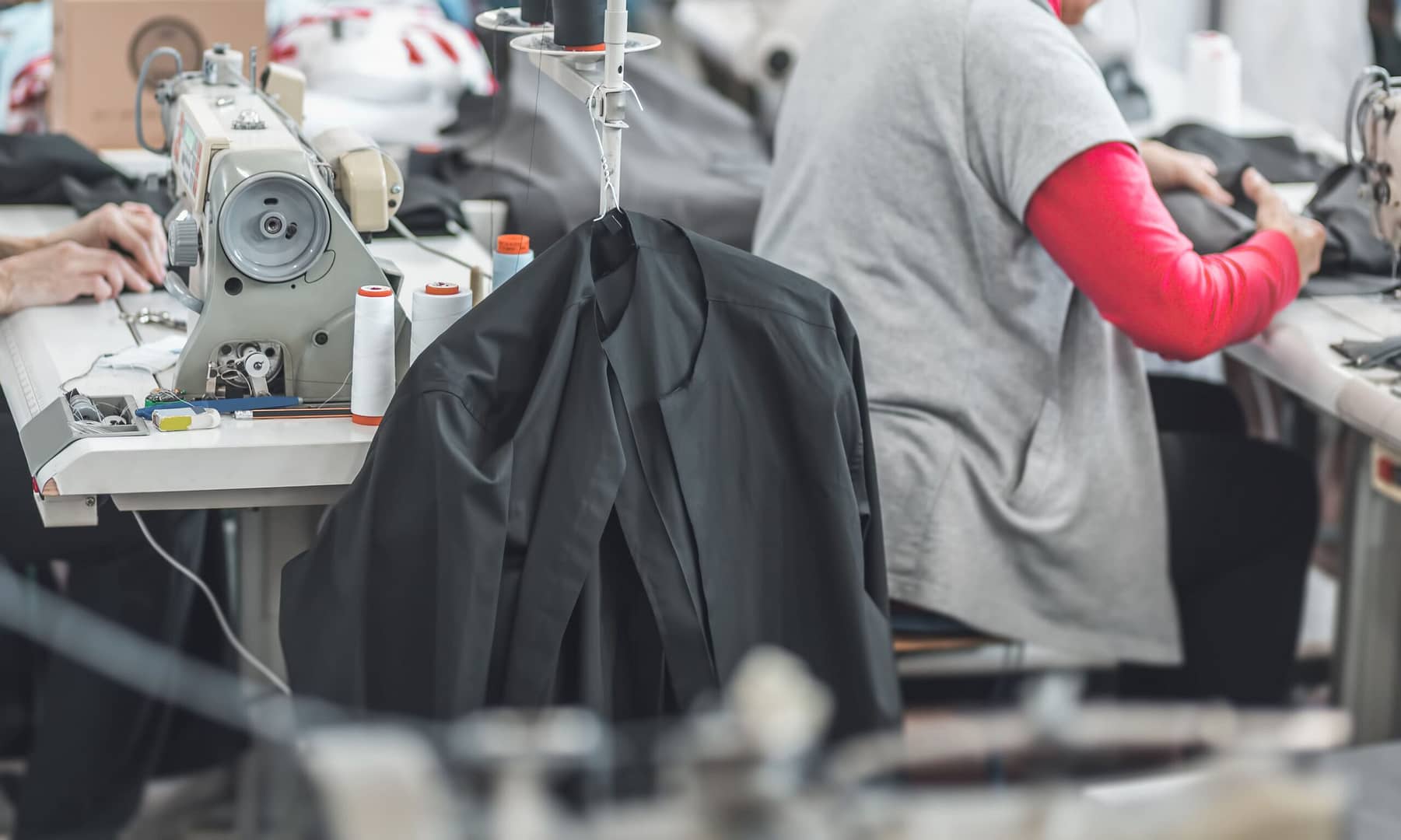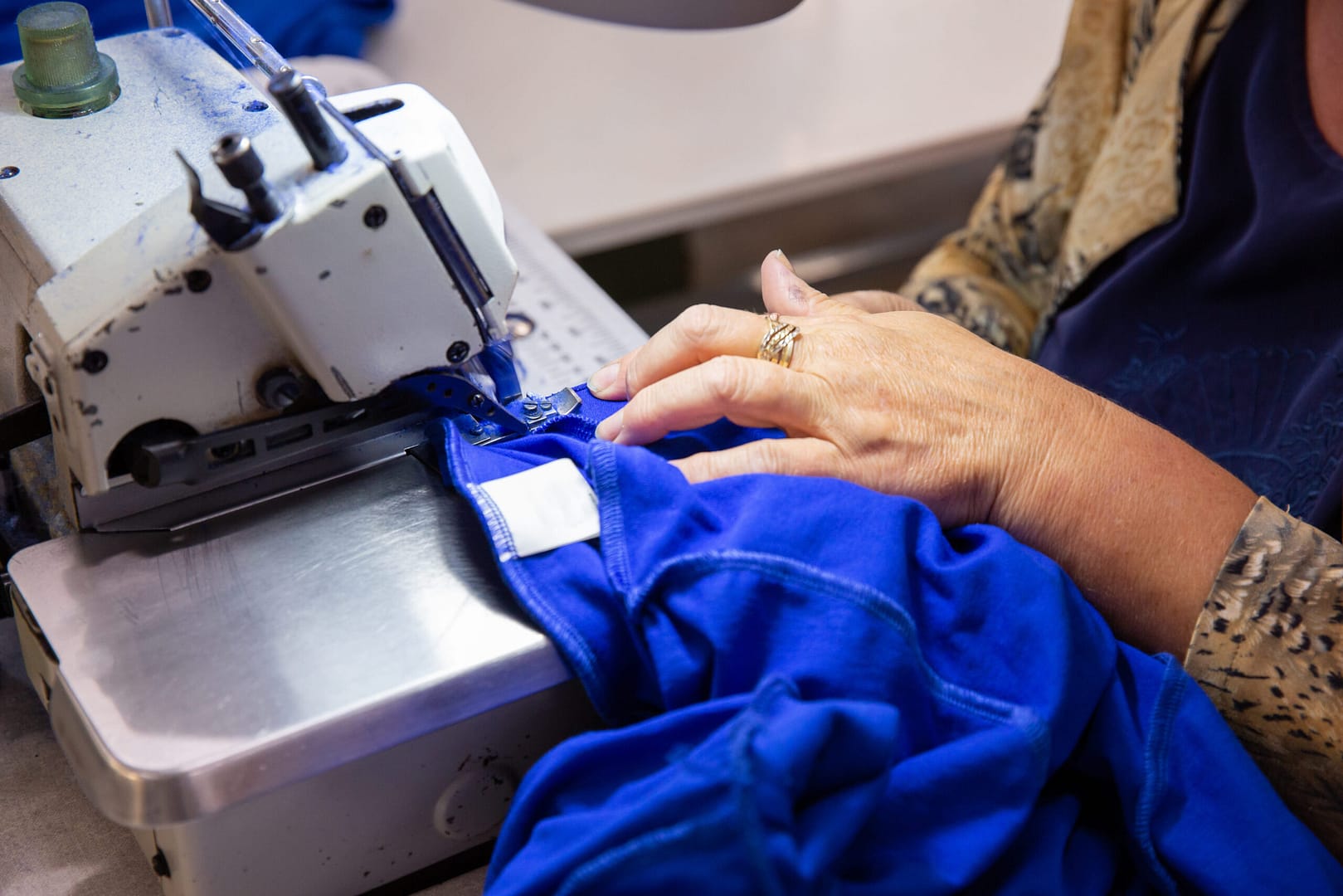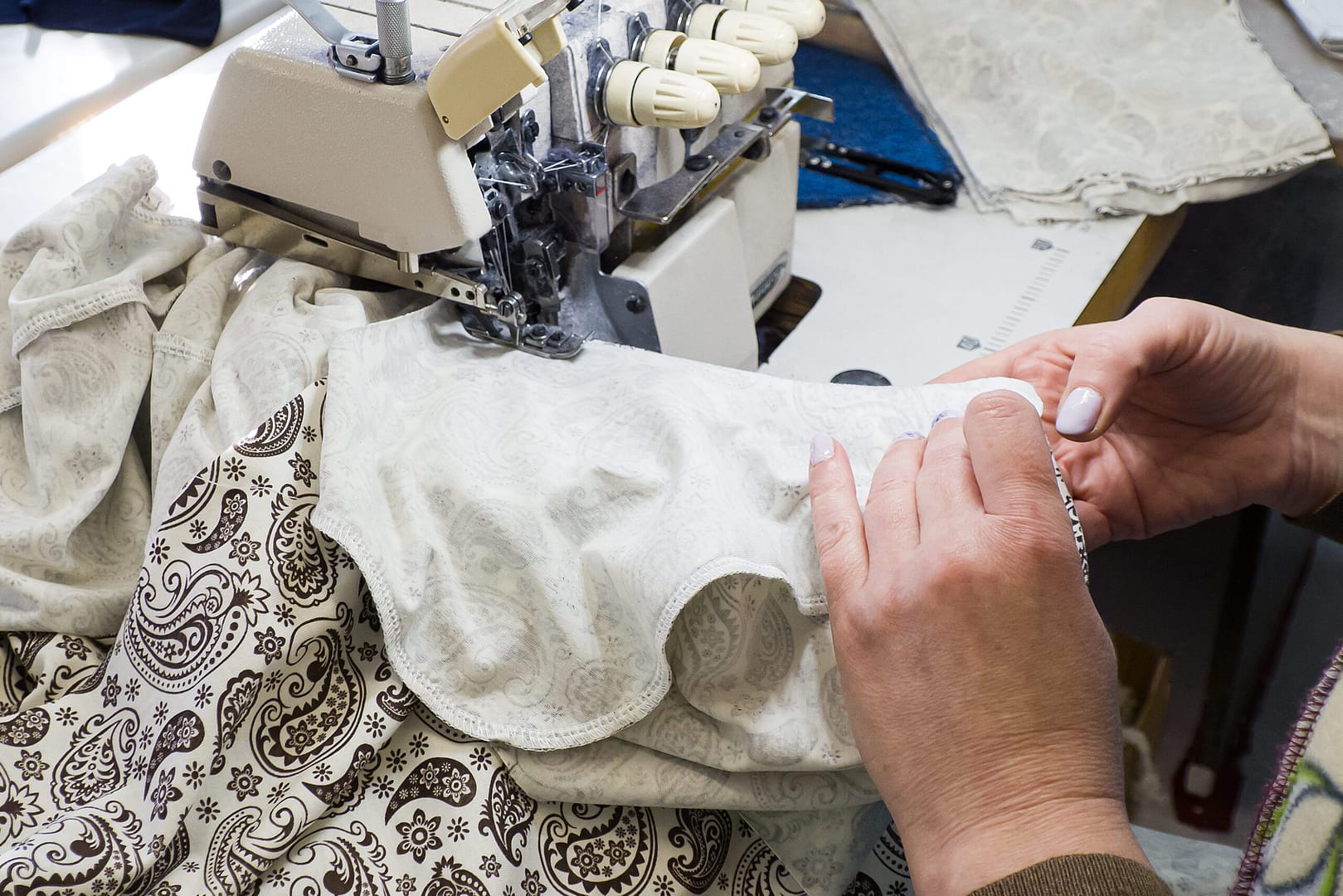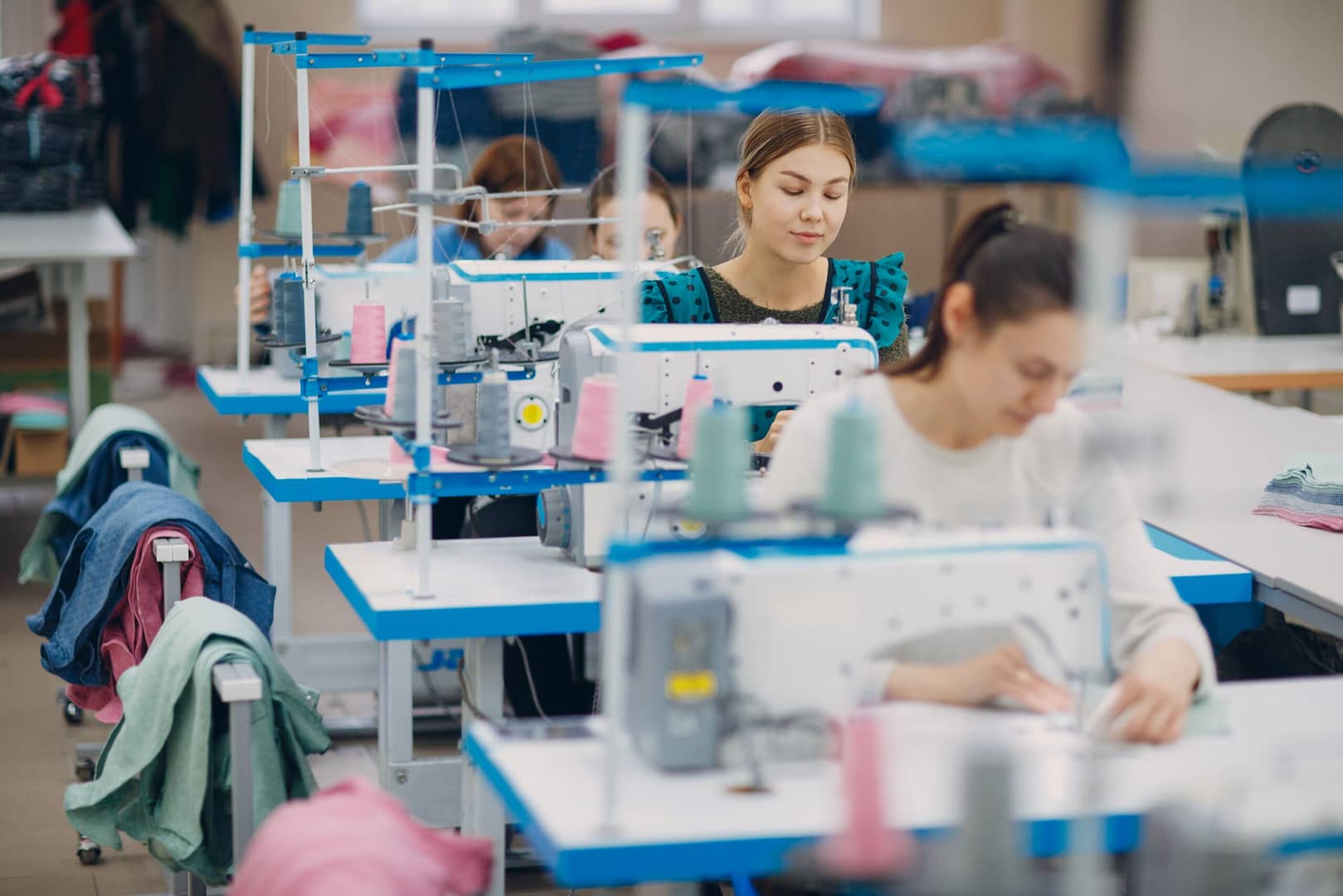| Fabric name | Acrylic fabric |
| Fabric also known as | Polyacrylonitrile, acrylonitrile |
| Fabric composition | Synthetic polyacrylonitrile polymer |
| Fabric possible thread count variations | 18-100 |
| Fabric breathability | Low |
| Moisture-wicking abilities | High |
| Heat retention abilities | High |
| Stretchability (give) | High |
| Prone to pilling/bubbling | Very high |
| Country where fabric was first produced | USA |
| Biggest exporting/producing country today | China |
| Recommended washing temperatures | Cold, Warm |
| Commonly used in | Sweaters, hoodie, boots, boot lining, hats, gloves, athletic wear, carpeting, blankets, roller brushes, upholstery, area rugs, protective clothing, wigs, hair extensions |
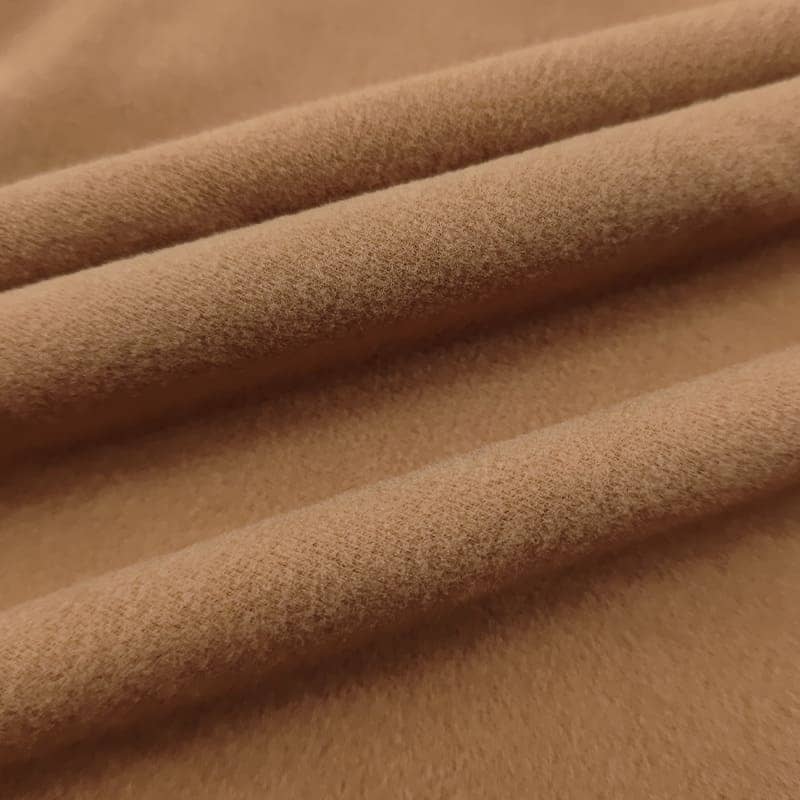
What is Acrylic Fabric?
Acrylic fabric, made from synthetic acrylic fibers primarily derived from acrylonitrile, was developed in the mid-20th century as a cost-effective and durable alternative to wool and cashmere. Known for its softness, lightweight, warmth, and easy maintenance, acrylic is resistant to mold, insects, and moisture, making it ideal for items like sweaters, blankets, and artificial fur.
It has excellent light resistance, retaining most of its strength even after prolonged sun exposure, which makes it suitable for outdoor uses such as sunshades and hoses. However, acrylic’s abrasion resistance is relatively low, and it is sensitive to strong alkalis and hard scrubbing. It also has good heat resistance, with a softening point between 190-230℃, and is resistant to acids, oxidizers, and organic solvents. Despite its poor moisture absorption, which can lead to a stuffy feel, acrylic remains popular for lightweight clothing and home décor due to its ability to maintain shape and texture after washing.
History of Acrylic Fabric
Acrylic fabric, developed by DuPont in 1941 and commercially introduced in 1944 under the trademark Orlon, quickly became a popular wool substitute for its moth resistance, durability, and vibrant colorfastness. Originally designed to mimic wool’s texture at a lower cost, acrylic’s development has seen significant innovations aimed at enhancing its feel, blending capabilities, and environmental sustainability. Despite its widespread use in garments like sweaters and knitwear, modern challenges for acrylic fabric include improving its environmental footprint, particularly in reducing microplastic pollution and enhancing biodegradability, as the textile industry seeks a balance between performance and ecological responsibility.
Properties of Acrylic Fabric

Acrylic fabric is renowned for a range of properties that make it a popular choice in the textile industry, particularly for items that require durability and easy maintenance. Here are some key characteristics:
- Durability: Acrylic fibers are strong and can withstand stretching, pulling, and exposure to most chemicals, which helps garments maintain their shape and texture over time.
- Weather Resistance: One of the significant advantages of acrylic is its resistance to weather elements. It doesn’t degrade under sunlight or a wide range of temperatures, making it ideal for outdoor wear and accessories.
- Moisture Wicking: Acrylic fabric has excellent moisture-wicking properties, which draw sweat away from the body, making it comfortable to wear in warm and humid conditions. However, it’s less breathable than natural fibers, which can be a drawback in some applications.
- Warmth: Although it is lightweight, acrylic is a warm fabric, which is why it is often used for sweaters, hats, and other winter apparel. Its ability to trap heat makes it a good wool substitute.
- Hypoallergenic: Acrylic doesn’t irritate the skin, unlike some other fibers, which makes it suitable for people with allergies or sensitive skin.
- Color Fastness: Acrylic fibers hold dye well, resulting in vibrant colors that do not fade easily with washing or exposure to sunlight. This quality makes acrylic particularly appealing for fashion items and home décor that require long-lasting color.
Production Process
The production of acrylic fabric is a multi-step process that transforms basic chemicals into fine, flexible fibers suitable for a variety of textile applications. Here’s a closer look at how acrylic fibers are made:
- Polymerization: The process begins with the polymerization of acrylonitrile, which is mixed with other monomers to form a polymer solution. This solution determines the inherent properties of the resulting fibers, such as strength, flexibility, and dye affinity.
- Spinning: The polymer solution is then forced through a spinneret—a device similar to a showerhead with many tiny holes—to form long, continuous filaments. This process is known as wet or dry spinning, depending on whether the filaments are solidified by coagulation in a chemical bath or by evaporation.
- Washing and Stretching: Once the filaments are formed, they are washed to remove any residual chemicals and stretched to align the polymer chains, which increases their strength and elasticity. This step is crucial for ensuring the quality and durability of the fibers.
- Cutting or Texturing: Depending on the desired end-use, the filaments may be cut into staple fibers, which are short lengths similar to natural fibers, or they may be textured to create bulk and heat retention properties, mimicking the feel of natural wool.
- Dyeing: Acrylic fibers are known for their ability to be dyed into vivid colors. The dyeing process typically occurs after the fibers have been textured and before they are spun into yarns. Acrylic has excellent color fastness, which allows it to retain color without fading over time.
- Final Treatments: Additional treatments may be applied to the fibers to enhance certain properties, such as flame retardancy, antistatic behavior, or resistance to bacteria and odors.
Benefits of Using Acrylic Fabric in Garment Manufacturing
Acrylic fabric offers several advantages that make it an attractive choice for garment manufacturers. These benefits not only contribute to the functional and aesthetic quality of the garments but also offer economic advantages:
- Cost-Effectiveness: Acrylic is generally more affordable than natural fibers like wool and cashmere, providing a cost-efficient alternative for manufacturers and consumers alike. This affordability also allows for the production of budget-friendly fashion items.
- Versatility: Acrylic fibers can be woven or knitted into a variety of textures and weights, making them suitable for everything from lightweight linens to heavy-duty outerwear. This versatility extends to blending with other fibers, where acrylic can be combined with natural fibers to enhance softness, durability, and thermal properties.
- Ease of Maintenance: Garments made from acrylic fabric are often machine washable and resistant to shrinkage and wrinkles, reducing the need for costly and time-consuming care practices. This makes acrylic garments appealing to consumers looking for low-maintenance clothing options.
- Durability: Acrylic’s resistance to wear and tear, moths, and chemicals makes it a durable option for everyday wear and long-lasting apparel. It retains shape and color well over time, even with regular use.
- Lightweight Warmth: Acrylic provides warmth without the heaviness of natural wool, making it ideal for winter wear that doesn’t feel bulky. This feature is particularly valued in active wear and children’s clothing, where mobility is important.
- Allergy-Friendly: Since acrylic fibers are synthetic, they don’t irritate the skin like some natural fibers can. This hypoallergenic property is crucial for clothing intended for sensitive skin or for consumers who are allergic to animal-derived fibers.
Types of Acrylic Fabric
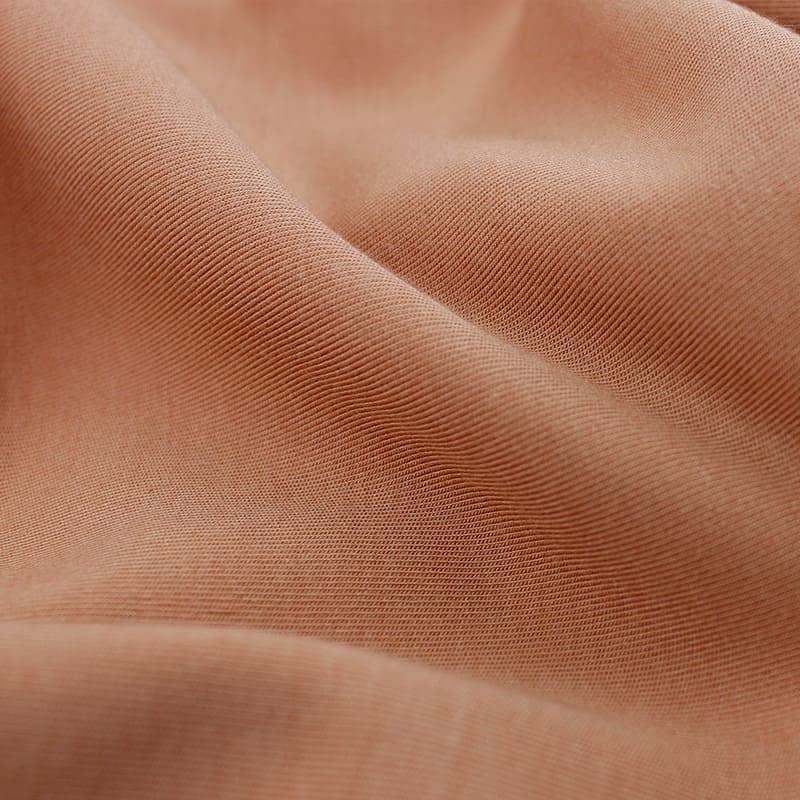
Acrylic fabric encompasses a variety of types, each defined by its composition and specific properties, designed to cater to different needs within the textile industry. Here’s an expanded overview of the main types and variations of acrylic fabric:
Standard Acrylic
Standard acrylic, often simply referred to as “acrylic,” contains at least 85% acrylonitrile. It is popular for its ability to mimic the feel and warmth of wool, making it a favored choice for garments like sweaters and blankets. This type of acrylic is valued for its softness, durability, and resistance to weather conditions.
Modacrylic
Modacrylic fibers include a modified form of acrylic that contains other polymers in addition to acrylonitrile, typically making up 35-85% of the fiber’s composition. The addition of these polymers enhances certain properties, such as flame resistance, making modacrylic ideal for use in industrial clothing, fireman uniforms, and hair wigs. Modacrylics are also resistant to chemicals and solvents, increasing their utility in various applications.
Nytril
Nytril is a variation of acrylic fiber that blends acrylonitrile with other substances to improve specific characteristics like elasticity and resilience. This type of acrylic is less common and is used in specialty applications where additional strength is required, such as in certain industrial fabrics.
Lastrile
Lastrile, another variant of acrylic, is designed to enhance specific features such as stretchability and fabric recovery. This makes it suitable for sportswear and other garments where flexibility and returning to form after stretching are crucial.
Common Uses of Acrylic Fabric
Acrylic fabric’s versatility and beneficial properties make it a popular choice across various applications. Here’s an exploration of the most common uses of acrylic fabric within the garment industry and beyond:
In Fashion
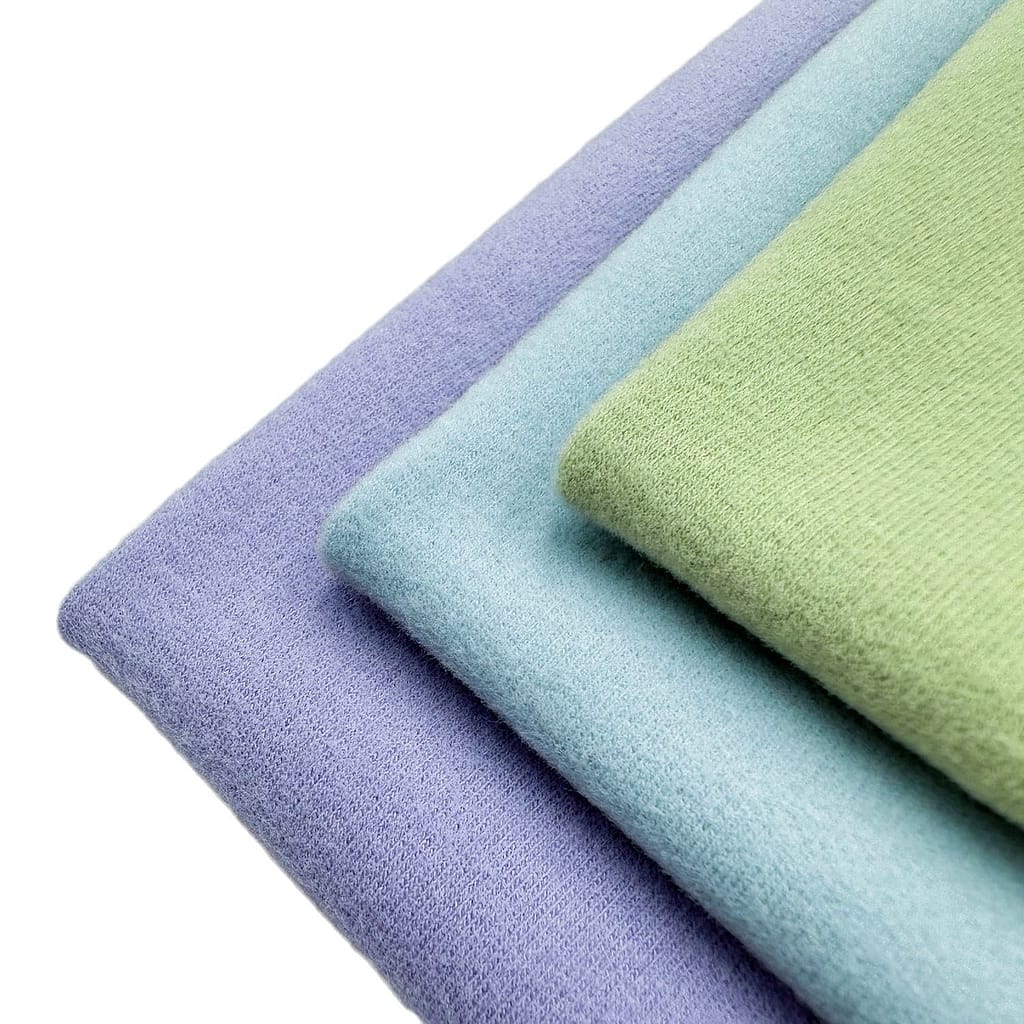
Sweaters and Cardigans: Acrylic’s wool-like feel and thermal properties make it ideal for winter wear, including sweaters, cardigans, and knit accessories.
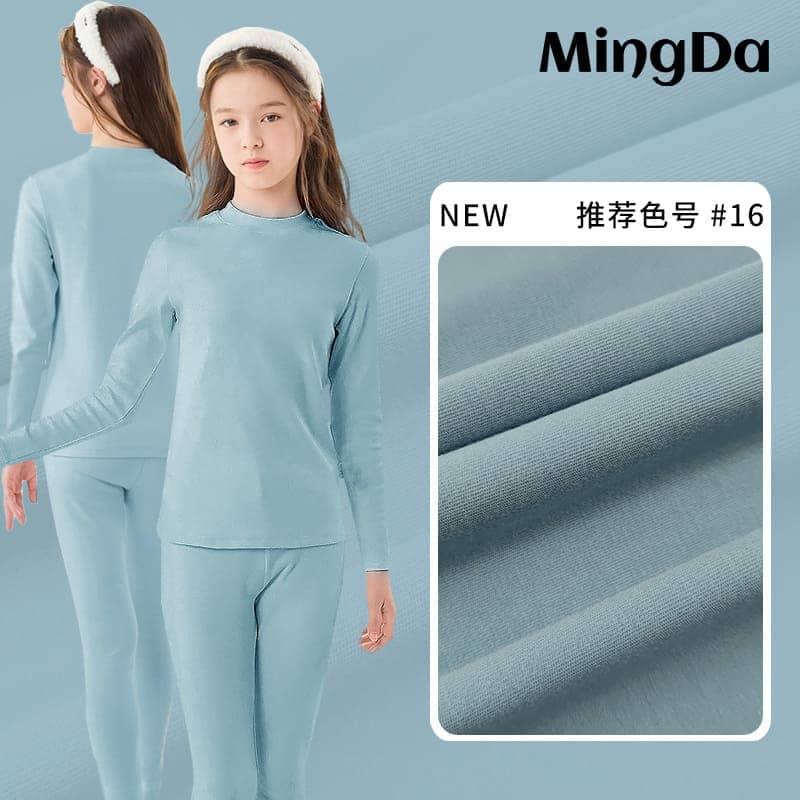
Underwear: Due to its moisture-wicking capabilities and lightweight warmth, acrylic is often used in sportswear, where it provides comfort without the bulk.
Sock and Hosiery: Acrylic’s durability and softness are perfect for socks and hosiery, providing comfort and resilience in products that undergo frequent stress and wear.
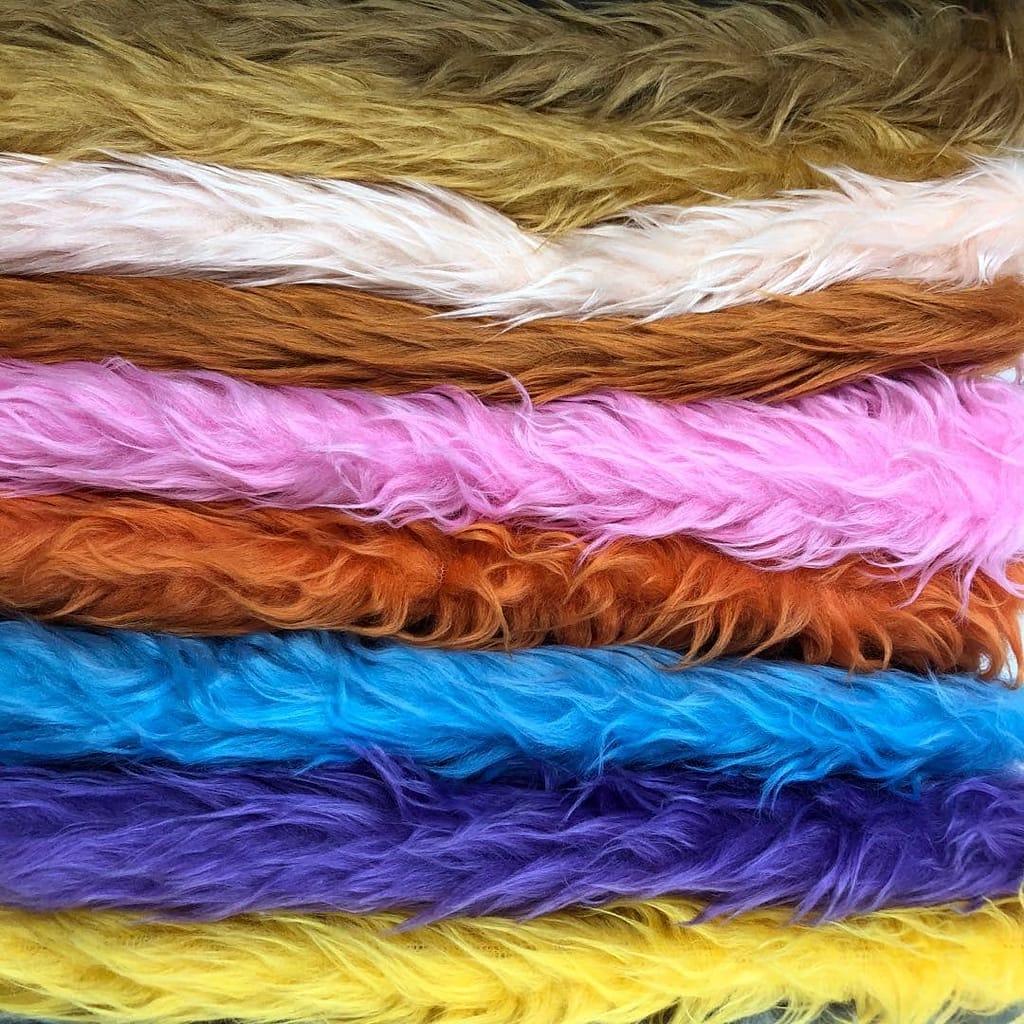
Faux Fur: Acrylic fibers can mimic the look and feel of natural fur, offering a cruelty-free fur alternative in fashion accessories and trimmings.
Home Furnishings
Blankets and Throws: Acrylic is widely used in the production of blankets and throws due to its softness and warmth, making it a cozy choice for colder months.
Upholstery Fabrics: Its resistance to wear and tear and ease of maintenance make acrylic a suitable fabric for upholstery, particularly in households with pets and children.
Outdoor Fabrics: Acrylic’s resistance to weather and UV degradation makes it an excellent choice for outdoor furniture covers, cushions, and more.
Other Industries
Industrial Applications: Beyond fashion and home décor, acrylic fibers are used in industrial products such as filters and cleaning fabrics, where durability and chemical resistance are paramount.
Crafts and Hobby Materials: In the crafts sector, acrylic yarns are favored for their ease of use and care, vibrant colors, and affordability, making them popular for knitting and crochet projects.
Conclusion
Acrylic fabric, with its myriad of beneficial properties and diverse applications, remains a significant player in the textile industry. Its ability to mimic the qualities of natural fibers like wool, combined with its cost-effectiveness and versatility, makes it a popular choice among garment manufacturers and consumers alike.
For more insights and support on textile production and apparel manufacturing, visit us at Valtin Apparel.

